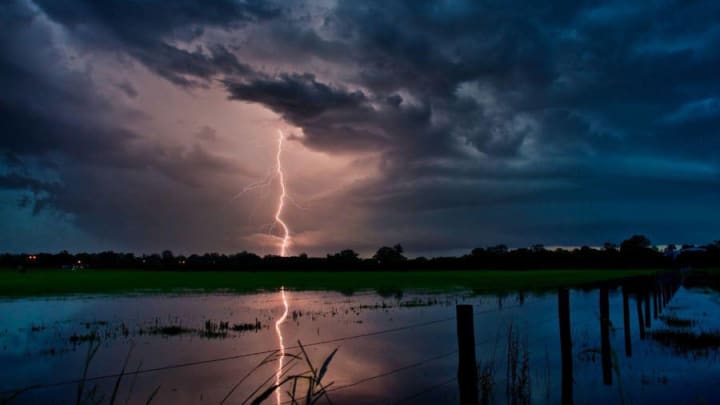Nature's Fastest Killer
Lightning Survival Tips

Today’s article is dedicated in memory of my step-cousin Kaitlyn “Moe” Rosensteel and her friend Brendan Mcgowan who passed away in 2019 because of a lightning strike.
Lightning is one of the leading causes of weather-related fatalities in the world. Lightning strikes 50 times a second, or over a billion times a year. It can strike anywhere, but it loves Florida the most, making it the lightning capital of the world. It can occur any time of the year, with July having the highest frequency of cases. This week is National Lightning Safety Week, and here are some tips to remember when the sky lights up.
Inside

The best way to protect yourself from lightning is to head indoors. These four walls and one-roof structures may provide you with the best protection from lightning, but it is not a 100% guarantee. 32% of injuries related to lightning occur indoors. Do not perform tasks that require water, like washing the dishes or taking a shower if your home has metal plumbing. If lightning strikes your home, it’ll use the metal plumbing to travel to the lowest point of the house. Water acts as a conductor of electricity, so if touching you are water at the time of the strike, you will get electrocuted. This also applies to handling electronics that are plugged in. Avoid walking across or laying down on concrete floors or leaning against concrete walls. The concrete itself can’t conduct electricity, but the metal bars inside of it can.
Outside

This is the worst place to be when lightning strikes! More than a third of lightning deaths are farmers working in the field, followed by those at work in industrial locations. Most causalities occur when people are most actively going about their day between noon and 6 PM. Being outside may put you at the highest risk, but there are ways to keep you safe. The moment you hear thunder, head indoors. This is the best sign that tells you lightning is nearby. If you cannot reach shelter, make yourself small by crouching onto the balls of your feet in a grassy area. Don’t attempt this on, or lie down on the concrete. As mentioned before, it may not conduct electricity, but the metal bars inside can. The reason you shouldn’t have your feet flat is in case lightning strikes the ground near you, you’ll have as little contact with the ground as possible, lessening your risk of getting shocked. Avoid open structures like gazebos and tall structures like trees. These are lightning magnets, as lightning often aims for the tallest structure in the vicinity. If you are inside or under one, the current will electrocute you when it reaches the ground. If in a body of water or pool, get out immediately as these can become deadly in lightning.
Cars

Even though it is uncommon, lightning can strike vehicles. If you are outside and you can’t find an enclosed space to seek shelter in, your vehicle is the next best thing. When lightning strikes a car, it’ll move through the body to the lowest steel point to the ground. Despite the popular rumor that lightning exits through the tires, this is not true. Rubber is a very poor conductor of electricity, so it often avoids it when leaving the vehicle. The reason they burst is from the heat radiating off the body of the car caused by the lightning, not the lightning itself. You should avoid touching the doors and windows during the storm as these could become electrified. If struck, wait a few minutes before getting out to give the electricity a chance to settle at the lowest point. Lightning can destroy the car’s electrical system and short out the power window buttons.
About the Creator
M.L. Lewis
Welcome to my little slice of pie. This blog will primarily focus on prepping and homesteading skills with a sprinkle of fiction every now and then.






Comments
There are no comments for this story
Be the first to respond and start the conversation.